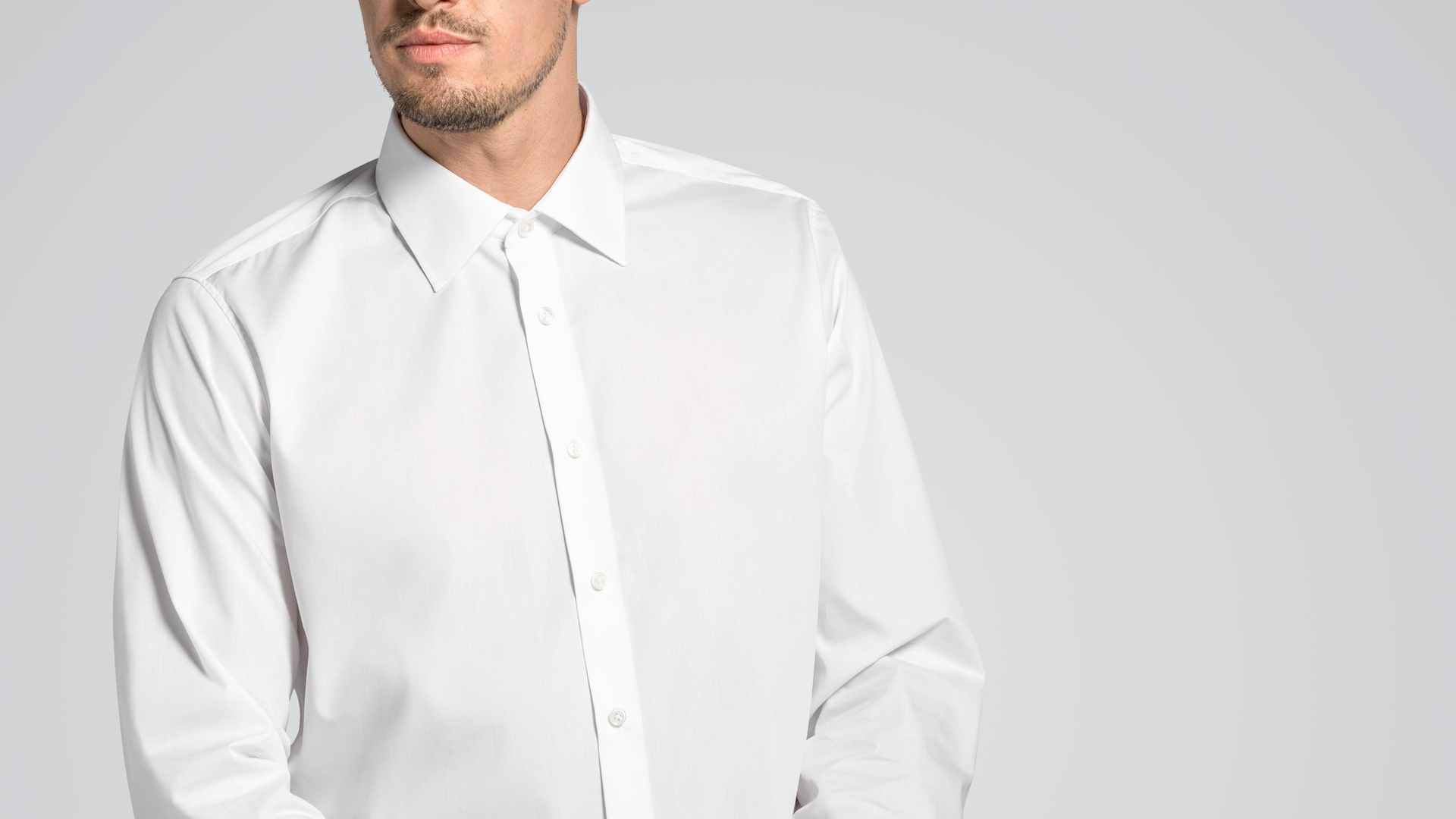We have collected the most frequently asked questions regarding the manufacturing and fusing processes. We will gladly provide customised advice for special requirements – via chat or through your personal Wendler contact.
Why does the interlining strike through?
If the fusing parameters such as temperature, fusing time and pressure are not properly adjusted, this can lead to strike through of the adhesive. The shirt fabric may also be very transparent or with an open construction.
OUR TIP:
Please make fusing tests prior to series production and adjust the fusing parameters if necessary.
Why turns the shirt fabric yellowish after fusing?
The yellow colour can occur when the fusible part is overfused – with too high fusing temperature and/ or fusing time. In some cases, this yellow colouring does not show after cooling down.
OUR TIP:
Please make fusing tests prior to series production and adjust the fusing parameters if necessary.
Why does the interlining strike back?
The interlining adhesive can strike back if the fusing parameters – especially in the first heating zone with heating source from upper side - are set too high.
OUR TIP:
Ensure the correct settings.
Other options are:
- Fusing pressure is too high
- Coating sinks back into the interlining construction
- Shirt fabric is difficult to fuse
- The conveyor belt is dirty
OUR TIP:
Please make fusing tests prior to series production and adjust the fusing parameters if necessary.
Why is the shirt fabric shiny after fusing process?
If the interlining coating dots are still visible on the shirt fabric that may have a transparent or open construction, the fabric surface is shiny. The main reason for a shiny surface is when the fusible parts are over-fused (e.g. too high fusing temperature, time or pressure).
OUR TIP:
Use tissue paper or Teflon film for sensitive shirt fabrics.
Why has the interlining come off? And why do bubbles appear after washing?
If the fused parts are touched when hot, finger prints may be left behind. Optimal fusing can no longer be achieved at the respective coating dot areas.
OUR TIP:
Leave fusible part to fully cool down before further processing.
- Threads or fluff between the shirt fabric and interlining may cause delamination
- Coating dots are damaged when removing labels from the coated side
- When removing foreign particles from the coated side (scratches), the coating dots are damaged – this causes the risk for detachment after washing
- Fusible part is laid on a joint of the conveyor belt and can thus not be fused properly - risk of delamination at the joint area part
- Bond strength values are too low
- Fusing parameters are not set properly
OUR TIP:
Test the fusing parameters prior to series production.
Why is there a moiré effect and how can this be prevented?
Sometimes, an interaction of shirt fabric and interlining construction occurs - a phenomenon called moiré effect.
OUR TIP:
Do not cut the interlining in warp direction – turn it so that it is slightly diagonal. This can prevent the moiré effect. Or use a similar interlining article with different construction.
Why does the collar collapse?
If the collar band is too light, it may not be stable enough to withstand the weight of the top collar with basic and patch interlining - the collar can collapse. Another reason is that the collar pattern could also be incorrect.
OUR TIP:
Get in contact with us! Together, we will find the suitable interlining combination.
Are there general rules for selecting and using interlining combinations?
- The collar skin should not be lighter than the collar patch
- The collar band should not be too light in relation to the weight of the top collar
OUR TIP:
Use the same item for collar skin and collar band.
- Business shirts are usually constructed with collar patch
- Interlining for cuffs can be the same as collar skin
- Collar skin, patch and cuff are usually cut in warp direction
- Collar band is cut in warp direction or optionally in bias direction
- Bias direction is an alternative for fusible as well as uncoated heavy interlinings of a formal shirt
OUR TIP:
The collar skin and collar patch can be spot-welded before the fusing process. The patch is then pre-fused to the collar skin.
In which direction should fused parts be placed on the conveyor belt of the fusing press?
As a rule, the fusible part is laid in vertical direction on the conveyor belt of the fusing press, meaning across the belt . Alternatively, you can place it diagonally.
OUR TIP:
Put the fusible part on the belt in an offset position and use the entire belt width.
How can I prevent strike through on dark shirt fabrics?
All Wendler interlinings in black and charcoal colour have a modified coating (MC coating). This prevents strike through.
OUR TIP:
You can also prevent strike through by using coloured coating dots (CP finishing). This is particularly good for very transparent shirt fabrics. The coloured coating dots are not visible on the fabric surface.
Why does glue residue appear on the shirt fabric?
This can be due to a dirty, contaminated conveyor belt – caused by strike through, strike back or skimpy shirt fabric cutting.
OUR TIP:
Due to higher shrinkage, the cut shirt fabric should always be at least two millimetres wider than the interlining. Regular cleaning of the fusing press/ fusing belt is also recommended. The fusing machine maintenance schedule plan – or that of its manufacturer – must be observed.

We will gladly advise you
Alexander Hauser Senior Sales Manager (Wendler HQ's) E alexander.hauser@wendlerinside.com


